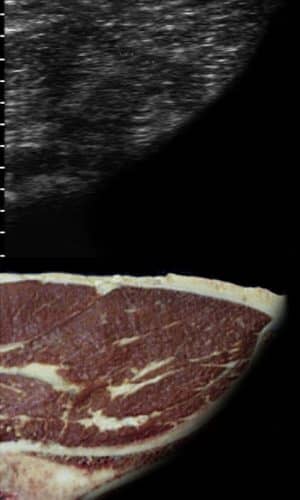On-Farm Carcass Trait Measurements
Project Description
Research problem
Beef grading practice consists of yield grading and quality grading, and nearly all commercially processed beef carcasses are graded. Improving yield grades provides a financial incentive to producers as they receive premiums for carcasses with high grades. However, grading information is provided to the producers after the slaughtering of animals, then feedlot operations do not take full advantage of this information on navigating their cattle finishing strategy. In this context, there is a need for new methods that can quantify the yield grade in live animals to allow planning feedlot operations to meet the industry goal of producing a high-grade carcass. One of the factors that adversely impacts the meat quality is preslaughter stress caused by environmental factors. Currently, there is no practical method or effective strategy to quantify and monitor the stress in cattle, which will be innovatively addressed in this project.
Objectives
1) quantify cattle preslaughter stress and
2) predict the carcass grading in live animals.

Visit Veterinary AI lab at the University of Guelph
The iHAD lab collaborates with the Veterinary AI at the University of Guelph on a project that involves anomaly detection in canine radiographs. To know more about the Veterinary AI lab and its research visit their page.
Project Brief
In animal hospitals and veterinary clinics, radiographs are taken by veterinary technicians and are often sent for a teleradiology consult by radiologists who are not present on-site. Turn around times for these studies range from 1 hour to 2-3 days.
The Solution
Due to confidentiality, the detail of the project can not be disclosed.
Refer to the Veterinary AI lab at the University of Guelph.


